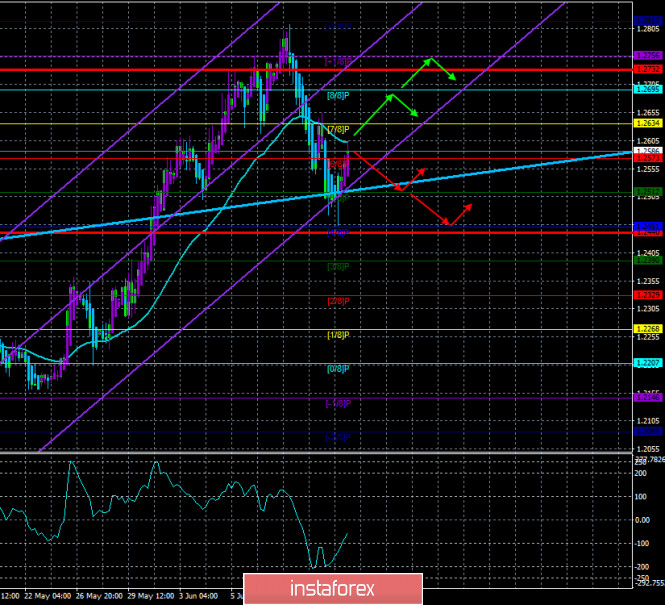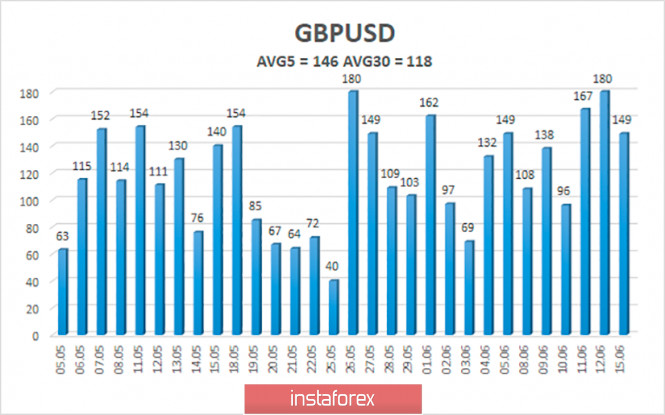4-hour timeframe

Technical details:
Higher linear regression channel: direction - upward.
Lower linear regression channel: direction - upward.
Moving average (20; smoothed) - sideways.
CCI: -52.6341
The British pound started a correction against the correction on the first trading day. Since the moving average line was broken earlier, the trend is now downward. Thus, after a new reversal of the Heiken Ashi indicator down, we expect a resumption of the downward movement. We have already said many times that there were no good economic reasons for the strong fall of the US dollar. Of course, there can be a lot of reasons for such a movement. For example, the banal inclusion of the Fed's printing press for several trillion dollars, which flooded the economy as part of its stimulus programs. However, this procedure should also have spurred inflation, and inflation in America, according to recent reports, continues to slow. Of course, the reason may be the political crisis in the country, which is already turning into a fierce confrontation between the Republican and the Democrat. However, there have already been many such political crises. So far, Trump and Biden still keep at least within the conventional limits of decency and do not open fire from large-caliber guns, although they regularly "poke" each other. However, at this difficult time for America and its economy, probably many Americans would like the president and presidential candidate to spend their time on rallying the nation against the background of a racist scandal, on fighting the coronavirus and its spread, as well as on economic recovery and fighting unemployment, and not on their battles for power. Against the backdrop of all that is happening in the US, traders seem to have forgotten what is happening now in the UK. We have also written about this many times, and if we describe the situation in a nutshell, the British economy is on the verge of an even more serious decline than in the United States or the European Union. Brexit continues to put serious pressure on the economy of the Foggy Albion, and the lack of a trade agreement with the US and the European Union does not allow us to look at the future with optimism. Perhaps Boris Johnson knows what he is doing. Perhaps he does have a clear and detailed plan for economic recovery when Brexit is fully completed. Perhaps even the British economy will reach a new level without dependence on the EU within a few years. However, during these few years, the economy will continue to shrink. And the stronger the contraction, the longer the recovery will be. However, traders were not interested in all this information in the last week. The pound grew by leaps and bounds, and the main topic for discussion on the currency market remains the topic of the 2020 US presidential election.
Now the main question for the entire currency market is: was the fall of the US currency in recent weeks in some way an accident or is it a pattern for the current political and economic crisis in the United States? If the former, then the US dollar should start growing again soon, and in the long term at least not lose positions against the weakest pound. If the upward trend resumes, then the alarm will sound. Many international investors and hedgers will likely be afraid to invest in the dollar or the US economy in the coming months (although the stock market has almost completely recovered from the shock in March-April). The situation here may be the same as a year ago with the pound. In the UK at that time, there was complete political confusion, and no one could say what would happen to the country at all and in what status it would continue to exist. Now in America, hardly anyone can say what will happen to the country if Trump remains at its helm. It is already clear that the standoff with China will continue and it will not end with the signing of new trade agreements. It is already obvious that Beijing can terminate any agreement that is unfavorable to it at any time and will go to victory over Washington in its ways and means. And they are completely different from American behavior. Beijing has a fairly large number of trumps in the confrontation with Washington, so it is unlikely to get a clear and complete victory of America over China. In any case, both powers and both economies will suffer. The question is whether American voters want to continue to be in the status of perpetual war with China, which, firstly, is not a small state with which you can conduct a dialogue from a position of strength, and secondly, has suffered from the coronavirus crisis much less than the United States, which means it is already in a better position than six months ago. And the most important thing that we need to understand and find out for the Americans on the eve of elections is whether they want their country to be ruled by a person whose opinion changes 5 times a day, and whose statements contradict themselves. One of the last such statements just a few days ago was: "We are ending the era of endless wars. The US army should not restore foreign countries, but protect its country from enemies. We are not going to continue to resolve conflicts in regions that most Americans have not even heard of." Trump said, pre-signing the $ 2 trillion military budget. Each year of the Trump presidency has been marked by new trade confrontations, conflicts, and increased spending on defense and military budgets. It turned out to be a situation in which, during the same speech, Trump hinted at the rejection of armed intervention in the affairs of other states and at the same time announced his readiness to continue to allocate huge amounts of money for the army and weapons. Why, if the US refuses military conflicts? Most experts again agree that Washington and Trump personally are not going to abandon the expansionist policy. Thus, the US President continues to act in the usual way.
On Tuesday, June 16, the UK is scheduled to publish reports on unemployment, applications for unemployment benefits, as well as changes in average wages. These reports are potentially important, but they can be ignored by traders. However, they will still indicate the current state of the economy. A more important report will be in the United States, on retail sales. Even more important will be Jerome Powell's speech to the US Congress, as well as the results of Boris Johnson's trip to Brussels, which is scheduled for June 18.

The average volatility of the GBP/USD pair continues to remain stable and is currently 146 points. For the pound/dollar pair, this indicator is "high". On Tuesday, June 16, thus, we expect movement within the channel, limited by the levels of 1.2440 and 1.2732. Turning the Heiken Ashi indicator down will indicate a possible resumption of the downward movement.
Nearest support levels:
S1 – 1.2512
S2 – 1.2451
S3 – 1.2390
Nearest resistance levels:
R1 – 1.2573
R2 – 1.2634
R3 – 1.2695
Trading recommendations:
The GBP/USD pair on the 4-hour timeframe started an upward correction against a new downward trend. Thus, today it is recommended to trade the pound/dollar pair for a decrease with the goals of 1.2512 and 1.2451 if the pair bounces off the moving average. It is recommended to buy the pound/dollar pair when traders manage to return to the area above the moving average, with the first targets of 1.2695 and 1.2732.
The material has been provided by InstaForex Company - www.instaforex.com